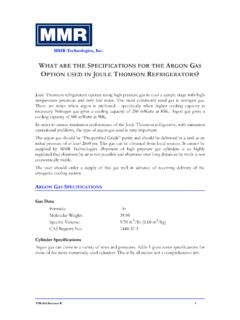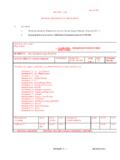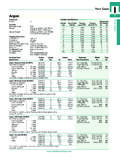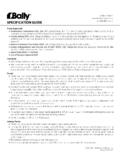Transcription of Air Separation Unit with Pure Argon Recovery …
1 Air Separation Unit with Pure Argon Recovery (Simplified)Compression & PretreatExpanderHeatExchangerLP-CAr-CAir G-O2G-N2 WasteL-ArHP-CSource: Harry Kooijman (2006) cryogenic air Separation process is a tight integration of heat exchangers and Separation columns which is completely driven by the compression of the air at the inlet of the unit. The air inlet stream is cooled and partially liquified against the leaving product streams. Nitrogen is then separated at a pressure of 6 bar in the first column and condensed against boiling oxygen at a lower pressure (around bar). These two columns share the same column shell to minimize the temperature difference between the condensing nitrogen and evaporating oxygen. The liquid bottom product of the high pressure column is rich in oxygen and is reduced in pressure. The Joule-Thomson (JT) effect cools this rich liquid such that it can be used run the condenser of a side rectifier that separates Argon from Oxygen. This side rectifier is fed with a vapor side draw from the low pressure column.
2 The wholeprocess requires additional cooling which can be obtained using the JT effect in an expander, that feeds compressed air directly to the low pressure column. Thus, a certain part of the air cannot be separated but leaves the unit as a waste stream. Gaseous Nitrogen and Oxygen, and liquid Argon are the products. With temperature differences in the heat exchangers of just a few degrees Kelvin clearly there is signifficant interaction in these interconnected columns when any of the manipulated variablesare adjusted or a disturbance affects one of the column controlled variables. Purities in Nitrogen and Argon are typically very high, with 1 ppm or less impurities. The oxygen product purity ranges from to (see also Vol. 30 (2006) pp. 1436-1446)The process flowsheet as simulated in COCO of the simplified ASU. This flowsheet was simulated with one tear stream: the liquid stream 22 from the Argon column (ARC) back to the low pressure column (LPC). Normally, the Argon column bottoms liquid flows back to the low pressure column by means of gravity.
3 This is simulated by using a pump that raises the pressure of the bottoms liquid, as otherwise COCO warns us that the bottoms liquid would flow against a pressure gradient (the Argon column operates at a lower pressure than the low pressure column!). We exchanged the icon for the pump as to denote the line is draining by gravity. Also note that there is a vapor and a liquid drawn from the condenser of the high pressure column, for control purposes. This allows the high pressurecolumn (HPC) condenser and the low pressure column reboiler duties to be matched by a controller. The combined stream is fed to the top of the low pressure column (via a separator). The rich liquid bottom product of the high pressure column is flashed where the heat input is set equal to the condenser duty of the Argon side rectifier. The gaseous product streams are all heated up against the inlet air flow to recover specifications made on the various unit operations of the ASU. As the number of stages in ChemSep LITE is limited to 50, the obtainable purity for the liquid Argon at the top of the side rectifier as well as the purity of the Oxygen in the low pressure column are less than what they normally are.
4 Nowadays, using structured packings, it is possible to equip the Argon column with enough stages to reduce the impurities to less than 1 ppm! Note that we included heat leaks into the columns from the environment as well as pressure drops in the columns over the column internals, which raises the required inlet pressure for the the three heat integrations in the ASU is shown: the cooling of the feed against the product streams in the main heat exchanger, the LPcondenser against the HP reboiler, and the condensation of Argon against evaporization of rich internal flowrates in the LPC must vary to obtain a pure gaseous Nitrogen top product as well as areasonably pure oxygen in the bottoms. At the same time the vapor draw from the LPC to the ARC must be low enough in Nitrogen to prevent buildup of N2 in the Argon column, yet high enough in Argon for the ARC not to become flowsheet was solved using the Peng-Robinson with the following binary interaction parameters:N2/O2 = , N2/Ar = , O2/Ar = for sidedraw to argoncolumn low enough to prevent N2 buildup in Argon column but yAr high enoughHigh L/V to obtain GN2 purity







